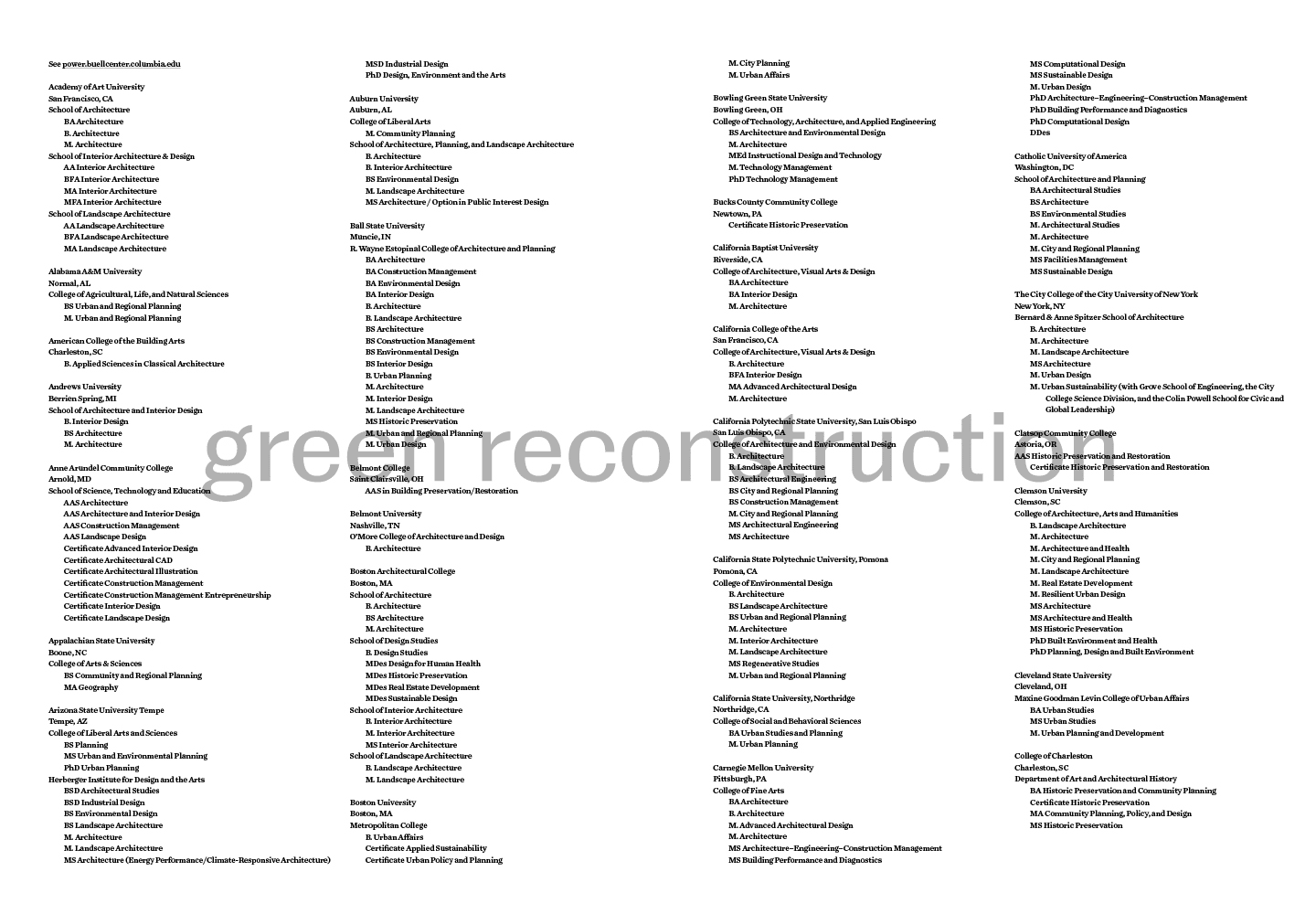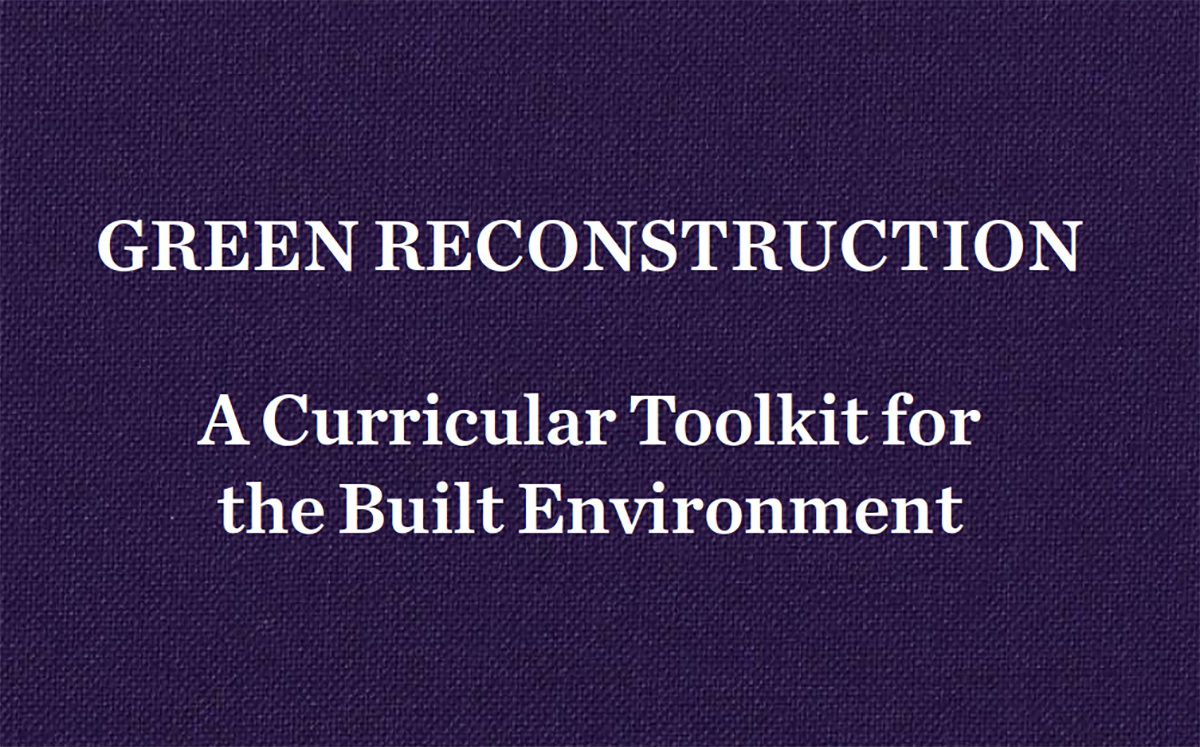Infrastructure in
America
Green Reconstruction: A Curricular Toolkit for the Built Environment
Download PDF
Change is learned. On the streets and in the public sphere, imagination, knowledge, and know-how go hand in hand. At a time of mounting social and ecological turmoil, planning and designing a just, equitable built environment requires professional focus anchored in intellectual ambition. Rote allegiances to orthodoxy must reorient toward new realities. Professional education, in short, must be rethought. For the arts and sciences of the built environment, change therefore begins in the classroom, as a shared learning that rebuilds the imagination from the ground up: Green Reconstruction.
Green Reconstruction is an outline, an open work, for the repair of a world ravaged by three intersecting crises—of mutual care, of racial oppression, and of climate, all intersecting in turn with economic inequality—that moves along two axes, the Green axis of ecological transformation, and the gilded axis of material redistribution, or Reconstruction. The Green axis refers to the ecological and economic ambitions of proposals like the Green New Deal and its counterparts around the world, all of which continue to merit serious academic and public attention. The second axis recovers the unfinished project of what W. E. B. Du Bois called, in Black Reconstruction in America (1935), “abolition democracy,” and with it, the political and economic restructuring of a system for which the expropriation of Black and Brown lives is business as usual, as racial and ecological apartheid remain global norms.
More specifically for the arts and sciences of the built environment, Green Reconstruction names a new curriculum, a change of course. By this we recognize the central role of professional, academically sanctioned expertise in constructing and maintaining a status quo, including a status quo nominally devoted to perpetual innovation. To mean anything and to change anything, Green Reconstruction must speak from below; but to endure, it must find its own designers, planners, and technicians. Such figures, both scholars and practitioners, link the powers below with the powers above, with the aim of supplying technical equipment with which to make things change.
To assist in teaching these questions and answering them the Buell Center has fashioned, with the help of many, this curricular toolkit for professional education in the planning and design of the built environment. It is organized to suggest different ways of learning together. Introductory material lays out the stakes and goals; a dossier of assessments and suggestions regarding how we learn offers pre-curricular back doors into long-established pedagogical practices, through which new strategies might be introduced. To activate these possibilities, a subsequent section outlines sample course content with an “object lesson” connecting three small American cities, that raises questions that must be addressed for anything like Green Reconstruction to be conceivable. This section is divided between a planning-oriented description of these cities from the perspective of built environment professionals working in each, and an architecture-oriented visual survey of their respective fabrics. A brief conclusion puts the sample material in context, looking to the challenges ahead.
Released digitally and in print, Green Reconstruction: A Curricular Toolkit for the Built Environment is available for no cost to anyone interested in the relationship between curricular and societal change. The PDF is available for download here, and the print edition, for which limited quantities are available, can be requested here.
We note emphatically: This research is preliminary, as are the corresponding suggestions. None derives from specialized expertise but rather, from open, unwieldy conversations of the sort we have tried to model. We assemble it here as an invitation to join these conversations and to start new ones, and to bring to them the deepest knowledge and the most profound imagination.

Design by MTWTF

Design by MTWTF